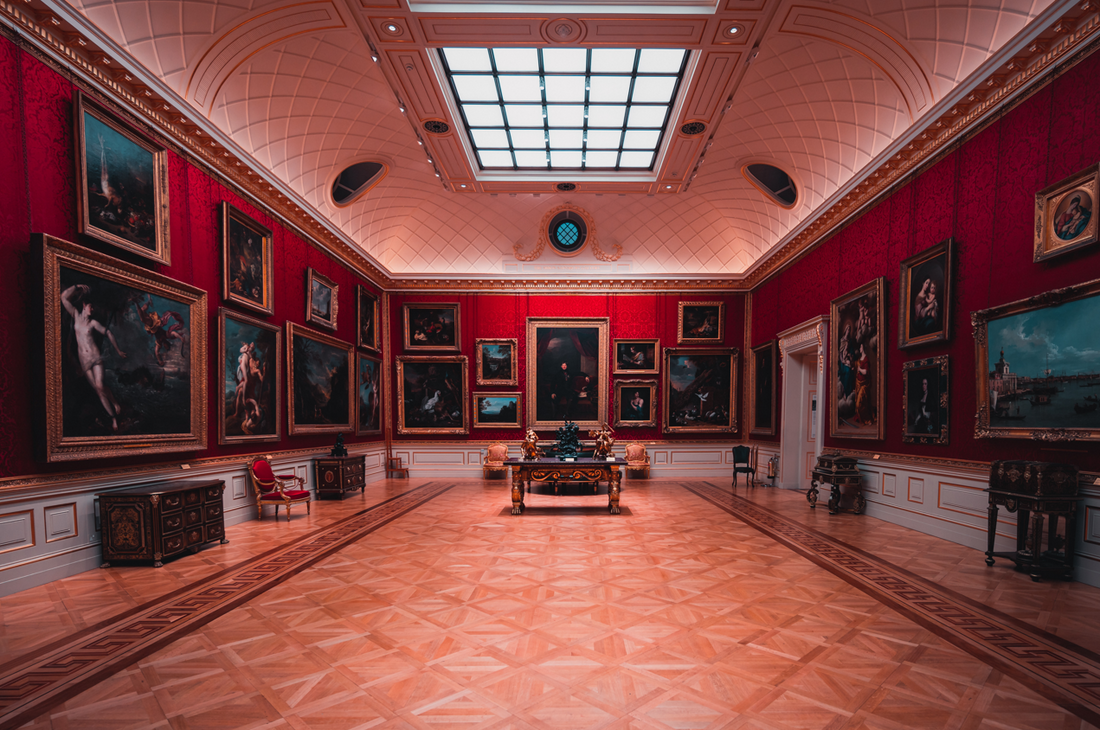Art exhibitions serve as platforms for artists to showcase their work and engage with audiences.
Types of art exhibitions: Solo, duo, group, institutional, retrospective, temporary, itinerant, anthological, museum, art event, and online. Each offers unique opportunities for artists to showcase their work and engage with audiences, contributing to the diverse landscape of contemporary art.
In the art world, there are various types of exhibitions, each with its own characteristics and significance. In this article, we will provide a comprehensive overview of the different types of art exhibitions, exploring their definitions, organization, and importance.
- Solo Exhibition

A solo exhibition is a highly sought-after opportunity for an artist to present their work individually. It typically takes place in a gallery context, although it can also be held in institutional settings such as art spaces, public libraries, or museums. Solo exhibitions serve as significant milestones in an artist's career, providing a platform for them to showcase a specific series of works or highlight a particular period of their artistic journey. These exhibitions generate buzz, interest, and exposure for both the artist and the hosting gallery, making them a favorite among artists and galleries alike.
View Naturalist Gallery's Featured Solo Exhibitions.
To showcase a solo exhibition with Naturalist Gallery, apply your art.
- Duo Exhibition

A duo exhibition, also known as a "two-person show," involves the collaboration and artistic dialogue between two artists. Similar to solo exhibitions, duo exhibitions are commonly held in art galleries but can also be found in institutional contexts. Unlike retrospective exhibitions, which focus on a single artist, duo exhibitions offer a unique opportunity to explore the creative synergy and contrast between two distinct artistic voices.
- Group Exhibition

In contrast to solo and duo exhibitions, a group exhibition involves the participation of at least three artists or more. These exhibitions provide galleries and institutions with the opportunity to showcase multiple artists in a single show, often combining established artists with emerging talents. While solo exhibitions tend to dominate gallery programs, group exhibitions play a vital role in institutional settings, allowing curators to create thematic connections between artworks and convey socio-political messages or art-historical narratives.
- Institutional Exhibition

Institutional exhibitions encompass a broad range of art exhibitions held in various institutions, including museums, auction houses, curatorial institutions, artist estates, foundations, and private collections. The term "institutional exhibition" refers to the venue rather than the number of artists involved. These exhibitions hold immense significance for artists, as they signify recognition from both the commercial and critical art worlds. An institutional exhibition adds credibility to an artist's profile, attracting the attention of galleries and collectors.
- Museum Exhibition

Museum exhibitions are among the most well-known and accessible forms of art exhibitions. Taking place in museums, these exhibitions can be categorized into two types: permanent and temporary. Permanent exhibitions feature a museum's own collection of artworks, often including iconic pieces. Temporary exhibitions, on the other hand, present curated shows that explore specific themes, art movements, or individual artists. Museums play a crucial role in educating and engaging the public, fostering critical thinking and appreciation of art.
- Retrospective Exhibition

A retrospective exhibition serves as a comprehensive overview of an artist's entire body of work, spanning their entire career. Typically held in major institutions, retrospective exhibitions offer a retrospective glance at an artist's contributions to the art world. These exhibitions celebrate an artist's achievements and solidify their position in art history. They are considered significant honors, symbolizing a lifetime achievement and canonization.
- Art Event Exhibition

Art event exhibitions are an integral part of larger art events such as art fairs, biennales, and art festivals. These events host multiple exhibitions simultaneously, creating a dynamic and immersive experience for visitors. Art festivals, cultural capitals, and biennales feature numerous exhibitions throughout a city or specific venues. Art fairs, on the other hand, bring together galleries under one roof, providing an opportunity for collectors and art enthusiasts to engage with a vast array of artworks.
- Temporary Exhibition

A temporary exhibition has a brief term, allowing artists to make use of available resources and spaces effectively. This showcase technique enables artists to maximize exposure and reach a wider audience within a limited timeframe.
- Itinerant Exhibition

An itinerant exhibition involves set-ups in various locations and times, with the aim of accommodating display variations. Typically supported by state bodies, this format promotes greater access and reduces fixed costs by sharing expenses among different hosting organizations. Itinerant exhibitions enable artworks to travel and reach diverse communities, fostering cultural exchange and expanding artistic visibility.
-
Anthological Exhibition

Anthological exhibitions focus on a selection of particularly significant works that represent the artistic development of one or more artists. These exhibitions do not necessarily follow a sequential perspective of the artist's entire body of work. By showcasing pivotal pieces, anthological exhibitions offer insights into the evolution and artistic achievements of the featured artists.
- Online Exhibition

Online exhibitions exist solely in the digital realm, allowing artists and galleries to showcase artwork virtually. Many galleries have embraced online exhibitions as a strategy to reach a wider audience, curate additional shows, and facilitate online sales. Online exhibitions have become an important platform for artists to connect with viewers globally.
Naturalist Gallery showcases a curated selection of international contemporary art.
Explore our curated selections of contemporary artists from around the world.
To have your fine art taken seriously, apply to Naturalist Gallery.
Art exhibitions come in various forms, each serving a unique purpose in the art world. Solo exhibitions highlight individual artists, duo exhibitions explore artistic dialogues, and group exhibitions foster connections between multiple artists. Institutional and museum exhibitions validate artists' work, while retrospective exhibitions honor lifetime achievements. Art event exhibitions and online exhibitions offer dynamic and accessible platforms for engagement. By understanding the different types of art exhibitions, artists, curators, and art enthusiasts can navigate the art world more effectively and appreciate the diverse expressions of contemporary art.

You may also find the following articles helpful:
Understanding Art Exhibitions: An Insight into Curation and Culture
Top 10 Tips For Creating The Best Art Portfolio
How to Sell Art on Consignment: 12 Tips for New Sellers
Building Your Online Presence As An Artist
10 Tips and Tricks for Maximizing Your Art Sales
How to Become a Successful Artist
The Art Gallery: Everything You Need To Know
Why Gallery Representation is Good for Artists: 9 Key Benefits
Gallery Commissions: Understanding the Value for Artists


2 comments
Very interesting and informative post on Tanjore painting
Very interesting and informative post on Tanjore painting